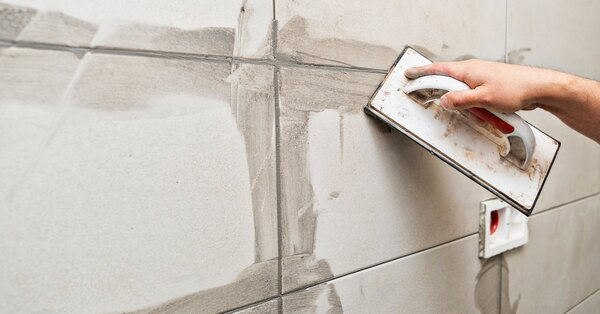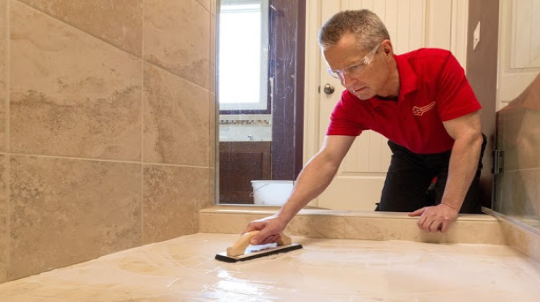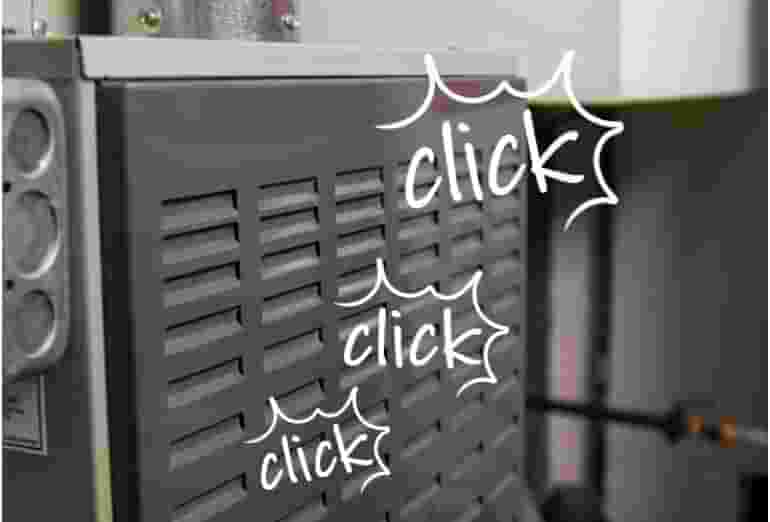Grout is made of cement paste which hardens when combined with water, and for the most part, it’s a similar scenario for grout installation no matter the surface. Eventually, your home’s grout will begin to ebb and fade away from your surface tiles due to being exposed to chemical grout cleaners or moving around large, heavy furniture, which weakens sealant and renders it more susceptible to crack and fractures. Fluctuating temperatures and high moisture levels will also wear out the surface sealant over time and lead to grout damage. Our Norfolk handyman is trained to restore all types of joints with effective Norfolk grout repairs, such as soft and control or expansion joints. For example, a soft joint is a line of glue that is filled with colored silicone or caulk instead of cement and an expansion joint is more of a stabilizer for piecing together tiles as it allows for expansion and creation of tile. Both types of joints are needed for grout repair. Norfolk, MA homeowners should know as soft joints work great for more subtle areas like your kitchen backsplash, while expansion joints are best reserved for flooring surfaces with heavy foot traffic like your bathroom due to extra humidity and moisture. Either way, joints bolster grout protecting it from readily cracking under pressure.
Types of Grout We Repair
- Sanded Grout: This is made of fine sand particles, so it doesn't shrink as a condensed material and bodes well under high volumes of pressure, so it does well for flooring installations and contraction tile joints.
- Unsanded Grout: This is more of a supple and textured material which doesn’t scratch too easily, making it best for delicate surfaces, for example marble to porcelain tile surfaces. But it won’t do well with fluctuating pressure, so it’s best reserved for your shower or kitchen backsplash.
- Epoxy Grout: This is pricier but the most versatile and durable grout material as it doesn’t easily shrink, crack or discolor and bodes well under pressure, and is able to handle abrasive cleaners. Best of all, it’s non-porous, so doesn’t need to be sealed, and is less susceptible to stains, grease, fractures, or even local weather conditions. It does well in moist spaces like your shower. If you want to keep your maintenance duties low, epoxy may be the most worthwhile and cost effective choice down the road.
Warning Signs That Mr. Handyman Can Handle With Norfolk Grout Repair
Some telltale signs your grout is damaged are discoloration from a kaleidoscope of colors, including black, blue, green, and pink in most areas due to mold or mildew growth or if the shade of grout gets darker when it’s been wet. If there are no funky colors then other red flags include loose tiles and crumbling from age or improper installation. Overall, grout lasts you many years, depending on your motivation for routine maintenance including grout cleaning to scrub away grime and dirt. Otherwise, Norfolk grout repair services are inevitable.
From our experience, ceramic tile requires constant maintenance, from tile cleaning to resealing the surface. Besides natural stone, ceramic is one of the most porous materials that need a good choice of sealer for protection. Our Norfolk grout repair technician often finds a lack of sealer, or they have worn out, but the homeowner wasn’t aware of it. That is when dirt particles create that dark color on the surface. Eventually, the lines will dry out and begin to crumble.
Why Mr. Handyman Is The First-Rate Choice For Norfolk Grout Repair
A well-done Norfolk grout installation service will highlight your home’s interior and brighten up your rooms, but only if you depend on your local experts for routine Norfolk grout repairs. Norfolk, OK residents can relax, knowing our trained technicians are well-adept at scraping and replacing any grout-based surface from your countertops and tiled floors as your structures are reinforced once more. Our uniformed technician will show up promptly and adjust to your flexible schedule and of course, we always clean up after ourselves and discard any waste at the proper facilities.
 Click to call
Click to call





